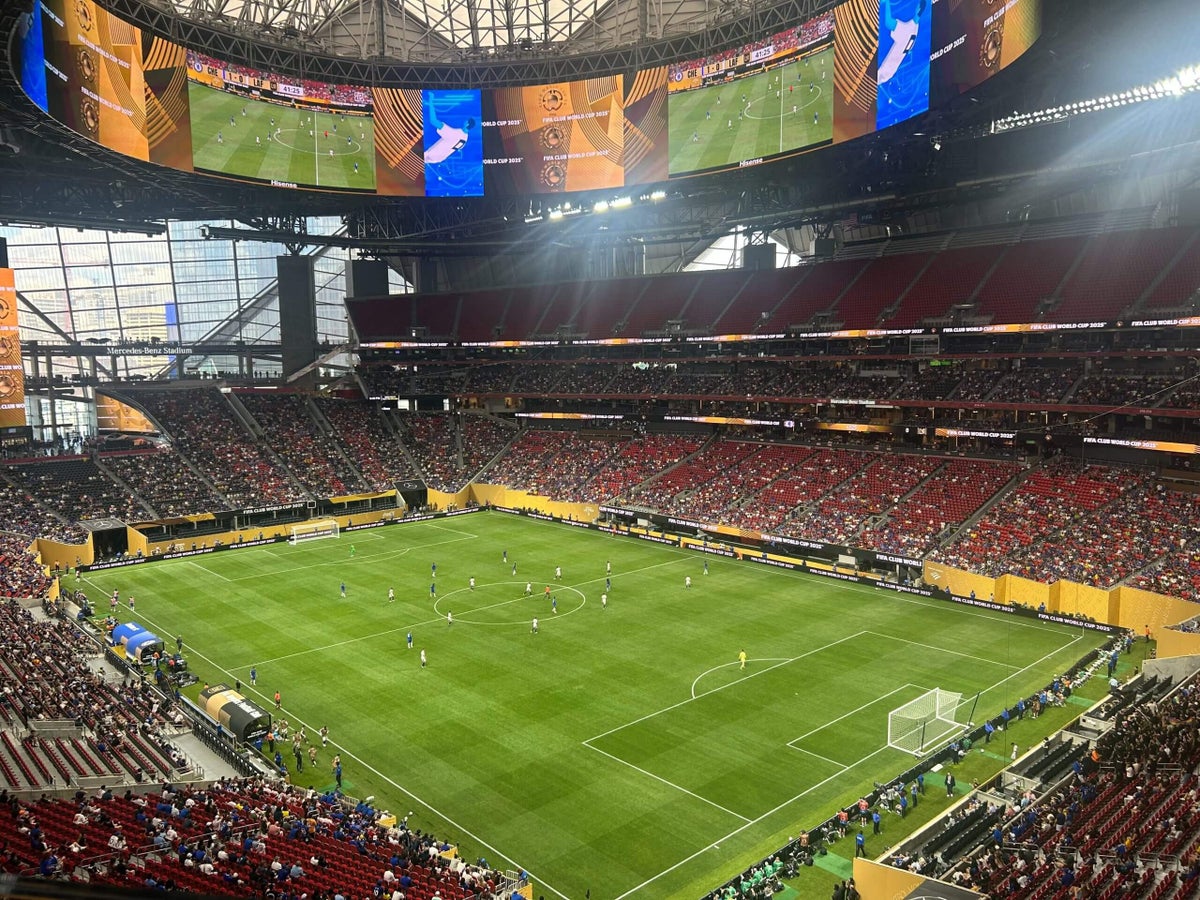FIFA has allocated more than $50 million to market this summer’s Club World Cup tournament in the United States, significantly increasing their budget in recent weeks to boost ticket sales, according to multiple sources familiar with their financial plans.
The tournament, championed by FIFA President Gianni Infantino, has faced numerous organizational hurdles as the governing body aims to make a strong impact with the inaugural 32-team format of the competition.
In a statement issued last week, FIFA expressed optimism, saying they “anticipate great attendances and electric atmospheres” across the twelve venues and eleven cities hosting the event. They claimed the tournament would “stand as the undisputed pinnacle of club world football.”
However, the opening match between Chelsea and LAFC illustrated the challenges remaining, with thousands of empty seats visible in the stands (Shaun Botterill – FIFA/FIFA via Getty Images).
FIFA’s marketing strategy has prominently featured social media, investing heavily in promoting posts through a wide variety of influencers on platforms like Instagram. This unique approach included enlisting a baseball journalist to introduce soccer to American audiences and collaborating with influencers in cooking and invention to resonate with casual sports fans. Highway advertising in various cities has also been a significant part of their outreach.
Previously reported by The Athletic, FIFA has employed unconventional tactics to fill stadiums throughout the tournament. This strategy proved effective for the opener, where attendance soared after aggressive price slashing on tickets, which had initially plummeted just weeks before the event. For instance, the lowest seat available on Ticketmaster was originally priced at $349 but dropped to $55 due to a dynamic pricing model.
Moreover, tickets were offered at just $20 to students at Miami Dade College, a move that included four complimentary tickets for groups. Discounts and free tickets were also provided to veterans for several group stage matches.
The attendance for the opening match reached 60,927 at a stadium with a capacity of 65,326. However, subsequent games have yielded mixed results. For instance, Bayern Munich’s match against Auckland City attracted 21,152 fans at the 26,000-seat TQL stadium in Cincinnati, while Paris Saint-Germain’s encounter with Atletico Madrid drew a crowd of 80,619 at the Rose Bowl in Pasadena. In contrast, less favorable figures were reported for other matches, including Palmeiras versus FC Porto, which only attracted 46,275 at MetLife Stadium, which can hold 82,500, and the Seattle Sounders’ match against Botafogo with 30,151 attendees at Lumen Field (capacity 68,740).
Concerns have arisen regarding the selection of venues, with reports detailing internal disagreements within FIFA about whether to utilize smaller, more intimate stadiums or larger NFL venues to promote a competition that has been branded as “the best against the best.”
The atmosphere at Monday’s match in Atlanta’s Mercedes-Benz Stadium was particularly troubling, as many sections sat empty with a recorded attendance of just 22,137 in a venue that can accommodate up to 71,000 attendees. The cheapest seat available was $52.
As preparations continued, FIFA faced additional challenges as U.S. Customs and Immigration Enforcement (ICE) officials were expected to attend the matches, raising security concerns. A Facebook post from U.S. Customs and Border Protection announcing their involvement was hastily removed after FIFA raised issues regarding the potential backlash.
Before the tournament, FIFA struggled to generate positive recognition in both European and U.S. markets, leaning heavily on social media promotions spearheaded by Infantino himself. The lack of traditional media access to Infantino has also been notable, as most engagement has come digitally through press releases.
Previous reports suggested that European clubs were considering withdrawing from future tournaments due to uncertainties surrounding sponsorship, broadcasting, and prize money, amid dissatisfaction from leagues like the Premier League and La Liga over disruptions to their schedules.
Interestingly, FIFA’s data highlighted a lack of interest from English, Spanish, or Italian markets among their top ten ticket sales, while there has been considerable enthusiasm from Brazilian, Argentine, Egyptian, and Tunisian supporters with strong attendance expected.
Promotions during the tournament also included a 20% discount on future tickets by scanning QR codes, aimed at enhancing attendance while addressing concerns related to ticket sales.
Additionally, FIFA eased concerns over broadcasting agreements and prize money after securing a $1 billion deal with the Saudi-backed DAZN network, which will facilitate global coverage of the tournament. Winners will receive substantial prize money, possibly as high as $125 million. FIFA hopes that, as the tournament progresses, interest and goodwill will grow, encouraging fans in the U.S. to fully support the knockout stages featuring top European clubs involved.
FIFA did not provide a comment regarding these developments.

